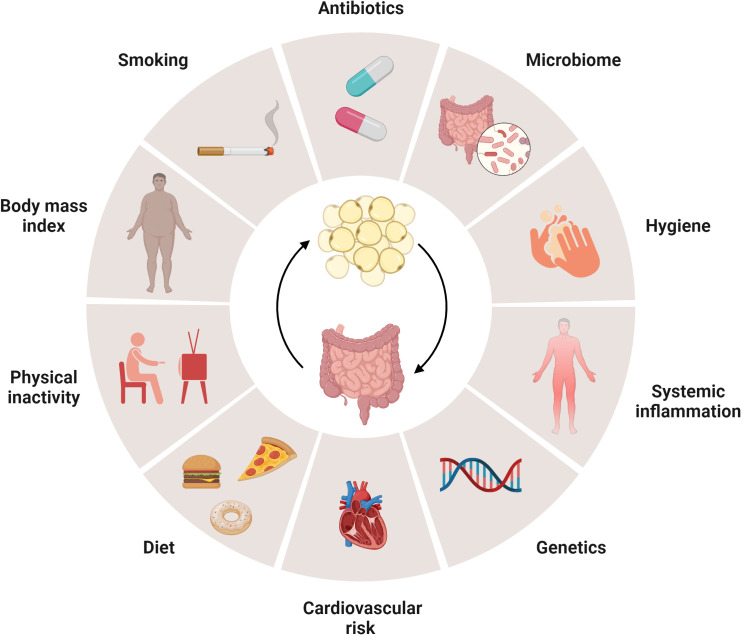Figure 3.
Metabolic inflammation in obesity and related disorders and in inflammatory bowel disease (IBD). The pathophysiology of metabolic disorders including metabolic syndrome (MS), type 2 diabetes (T2D) or metabolic dysfunction-associated steatotic liver disease (MASLD) shares considerable similarities with IBD, which is supported by experimental studies summarised in figure 2. Westernisation of lifestyle is considered to promote the development of these disease entities as incidence and prevalence are rising worldwide,21 22 with several risk factors that are shared by metabolic diseases and IBD. Experimental models indicate that similar mechanisms, such as gut microbial dysbiosis and nutrient excess, promote metabolic inflammation in obesity and related disorders and IBD alike.6

